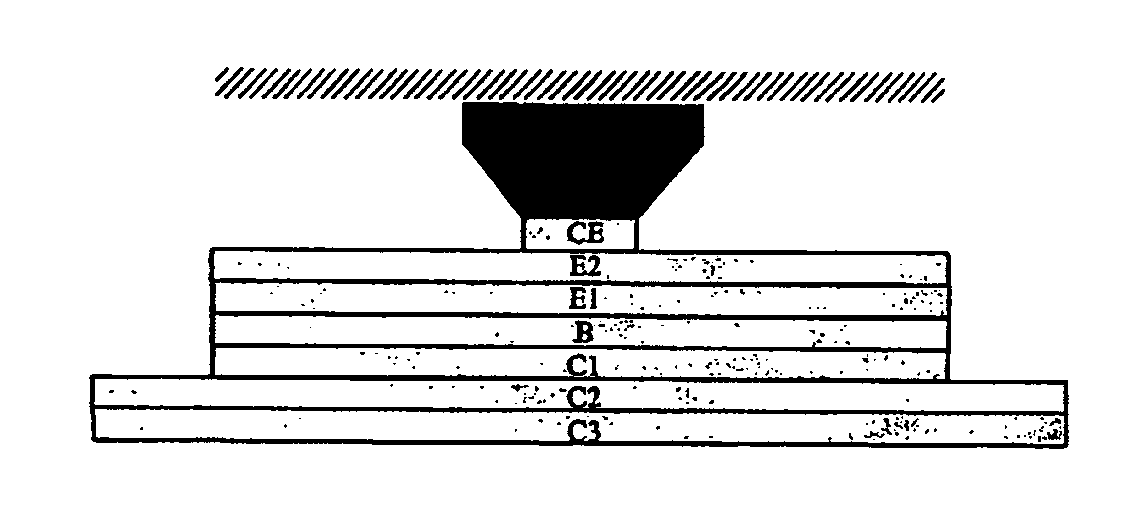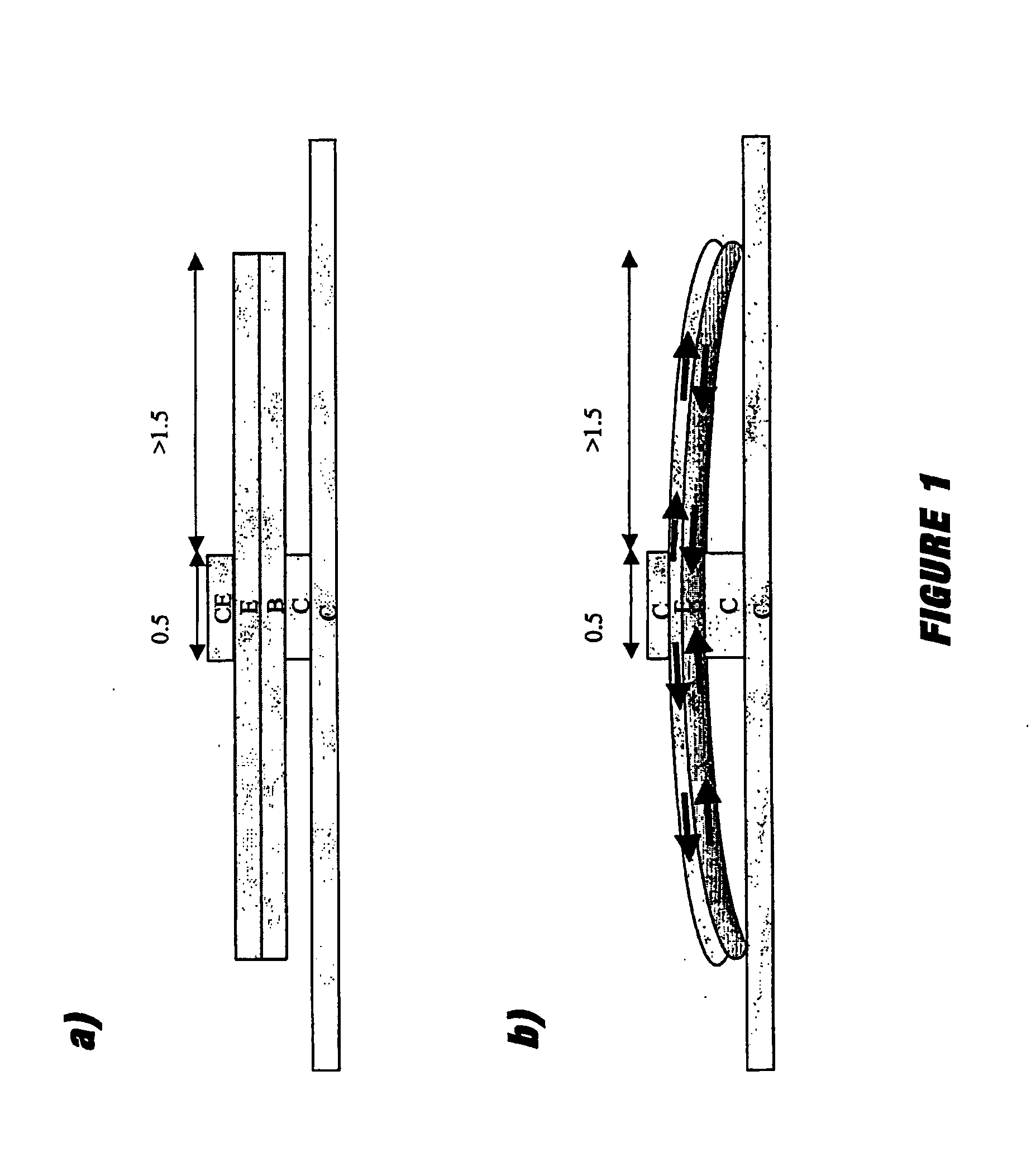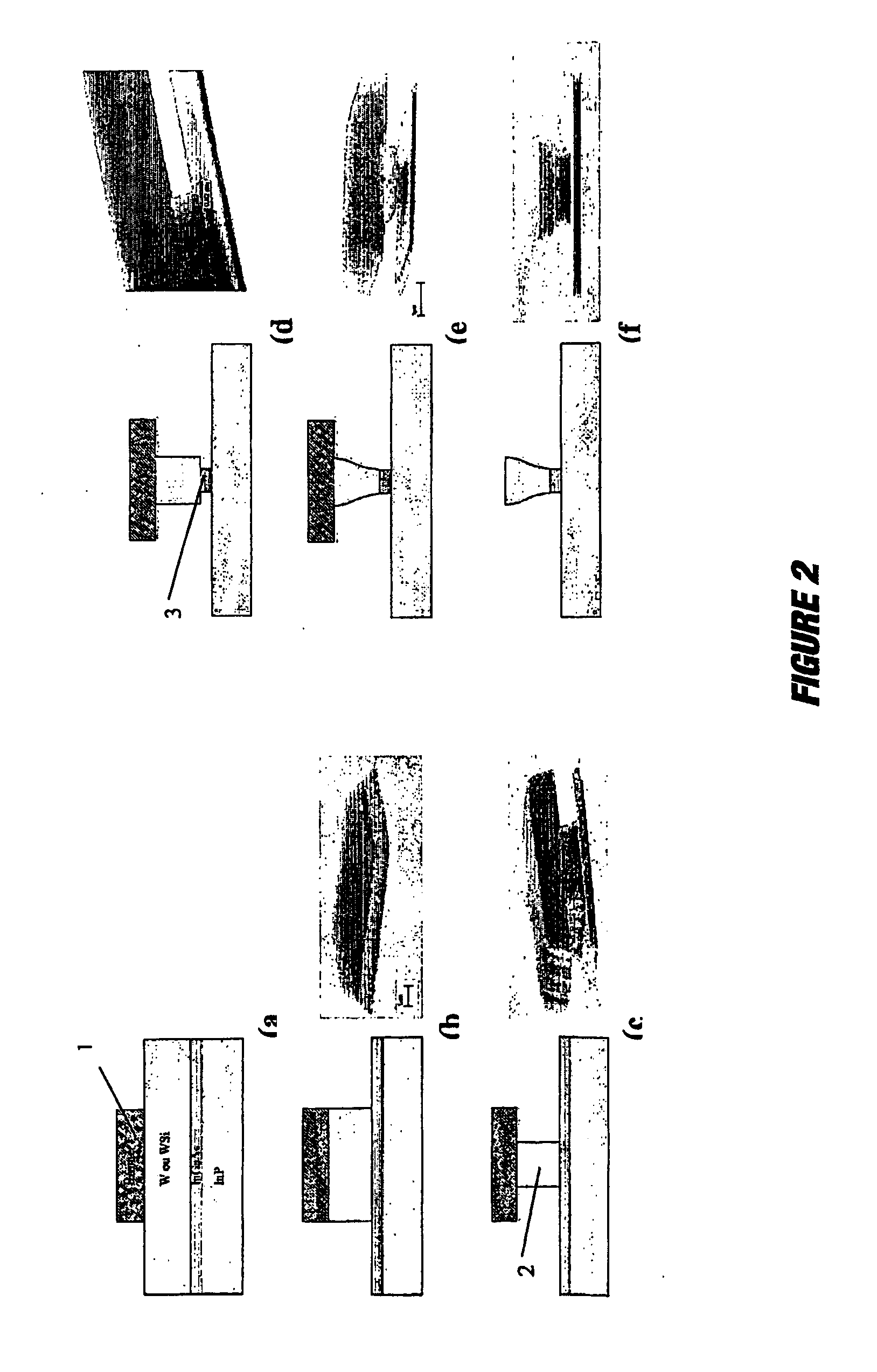Method for Making a Heterojunction Bipolar Transistor
a bipolar transistor and heterojunction technology, applied in the direction of basic electric elements, electrical apparatus, semiconductor devices, etc., can solve the problems of difficult resin introduction between the base layer and the collector contact layer, the structure as known until now is seriously flawed, and the deformation of the base layer. , to achieve the effect of reducing deformation and ensuring compatibility
- Summary
- Abstract
- Description
- Claims
- Application Information
AI Technical Summary
Benefits of technology
Problems solved by technology
Method used
Image
Examples
Embodiment Construction
[0041]The following is a description of the method in an application for making ultra-rapid heterojunction bipolar transistors (HBT) (f>500 GHz), but it can be applied to the production of other devices. The overall method comprises three major groups of steps: making the epitaxially grown stack, making the metal contacts and etching the semiconductor layers.
[0042]Making the Epitaxially Grown Stack
[0043]The first steps of the method according to the invention, described here in the context of an E-up configuration (emitter at the top), consist of epitaxially growing in a well known manner, the semiconductor materials used to make the HBT. These steps are implemented layer by layer on a substrate (in this case InP) which imposes its crystalline lattice on the entire structure. An example of the characteristics of the various layers is provided in the following table:
TABLE 1Typ. dopingTyp. thicknessLayerMaterial(cm − 3)(nm)EC emitting contactInGaAs>1 × 1019100E2 emitter 2InP>1 × 1019 ...
PUM
 Login to View More
Login to View More Abstract
Description
Claims
Application Information
 Login to View More
Login to View More - R&D
- Intellectual Property
- Life Sciences
- Materials
- Tech Scout
- Unparalleled Data Quality
- Higher Quality Content
- 60% Fewer Hallucinations
Browse by: Latest US Patents, China's latest patents, Technical Efficacy Thesaurus, Application Domain, Technology Topic, Popular Technical Reports.
© 2025 PatSnap. All rights reserved.Legal|Privacy policy|Modern Slavery Act Transparency Statement|Sitemap|About US| Contact US: help@patsnap.com



